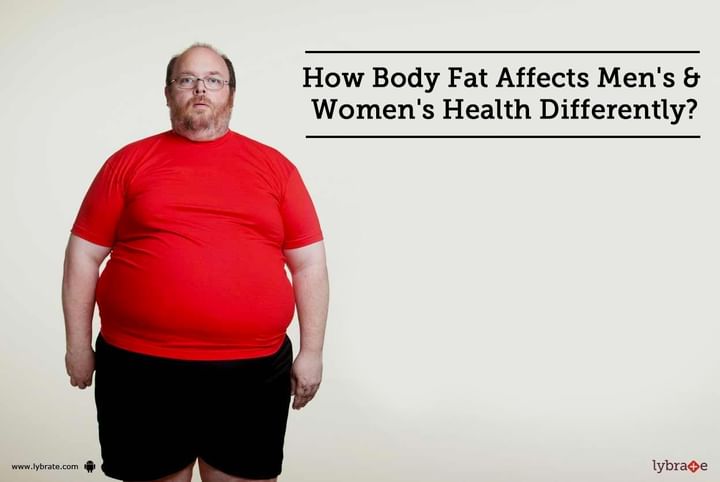How Body Fat Affects Men's & Women's Health Differently?
Body fat or adipose tissue is a constituent of the human body. Its primary function is to provide energy to the body. Body fat builds up differently in men and women. Recent studies explore the health consequences ensuing from these differences.
Usually, men have an ‘apple-shaped’ body. This is because men accumulate visceral fat – fat that is stored in the abdominal cavity – around the belly. Women, on the other hand, depict a ‘pear-shaped’ body because they have more fat deposits around the hips. Visceral fat is extremely dangerous because it affects the internal organs of your body, including the liver, intestines, and pancreas.
Body Fat Percentage in Men and Women
To evaluate your health, it is essential that you know your body fat percentage (BFP). A healthy body fat percentage depends on a number of variables such as age, body type, gender etc. For example, BFP range tends to be higher in women than in men because women require more body fat. The average BFP of females falls in between 25% and 31%.
What is a good body fat percentage?
Ideally, for men between ages 20-40, healthy BFP ranges from 8%-19%; between ages 41-60, normal BFP ranges from 11%-22%; between ages 61-79, the normal should be between 13%-25%. For women aged between 20-40 years, healthy BFP ranges from 21%-33%; between ages 41-60, normal BFP ranges from 23%-25%; between ages 61-79, the normal should be between 24%-36%.
What body fat percentage is unhealthy?
Body fat percentage below or above the normal range (as stated above) is considered unhealthy. For instance, if the BFP of a woman aged between 20-40 years is more than 30%, then it is considered overweight. Similarly, if a 50-year-old man has BFP below 11%, he is deemed underweight. Nevertheless, there are several ways to maintain a good body fat percentage.
How to Lose Body Fat Percentage?
Many people come up with questions like – Is it hard to lose body fat percentage? Certainly not, unless you have a serious underlying condition (obesity or PCOD). You can reduce your BFP by following the pointers below-
• Follow a protein-rich diet – It will decrease your appetite, reduce calorie intake, and preserve muscle mass. Good protein sources include dairy products, meat, eggs, legumes, seafood etc. • Add vinegar to your diet – Induces a sense of feeling full, lowers body fat, and reduces calorie intake
• Eat more healthy fats – Helps you burn fat quickly. Coconut oil, olive oil, and avocados are good sources.
• Reduce carb intake – Cutting down on refined carbohydrates like white bread/rice, pasta, snacks, cereals etc. can help you shed that extra flab.
Besides following a healthy diet, you should also engage in physical activities to bring down your body fat percentage to its normal range. Exercise more often – begin strength training to get rid of belly fat and build muscle mass. You can also lose fat by consuming these natural fat burners:
• Caffeine – boosts metabolism and helps you burn more fat as fuel
• Green tea extracts
• Protein powder/supplements – boosts metabolism and reduces appetite
• Soluble fibre
Having a healthy body fat percentage is the key to staying fit and steering away from a host of ailments. Therefore, maintaining a balanced diet along with moderate exercise and routine check-ups is extremely important.



+1.svg)
